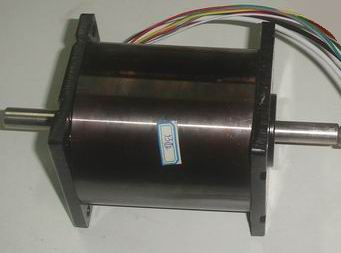
70-110 watt 88mm
Brushless DC Motors
Brush DC Motor Efficiencies
- Cost: Brushed DC motors are generally less expensive than their brushless counterparts.
- Simple control: The motors have a two-wire control and need little to no control in fixed-speed designs.
- Magnet placement: In brushless motors, the magnets are in the rotor. This means that connections, a commutator and brushes aren’t needed because of the motor’s control circuitry.
- Accuracy: Hall effect position sensors for commutation or rotary encoders help increase the accuracy in positioning applications.
- Less maintenance: Since there are no brushes, the motors are simpler to maintain and may last longer.
- Increased torque across various speeds: The lack of brushes eliminates power losses.
- Noise levels: The brushless design makes the motors quieter.
- Synchronicity: BLDC motors are synchronous motors, which increases their output power, allows for higher speed ranges and enables better heat dissipation.
- Size: The nature of brushless motors allows for the creation of small motors that are lightweight.
Brushless DC Motor Efficiencies
While BLDC motors offer more benefits, versatility and greater efficiencies over brush DC motors, they aren’t always the go-to answer. Some applications may perform better with brush motors or a combination of the two types.
To see if brushless DC motors are right for your project, contact the experts at Sinotech.
